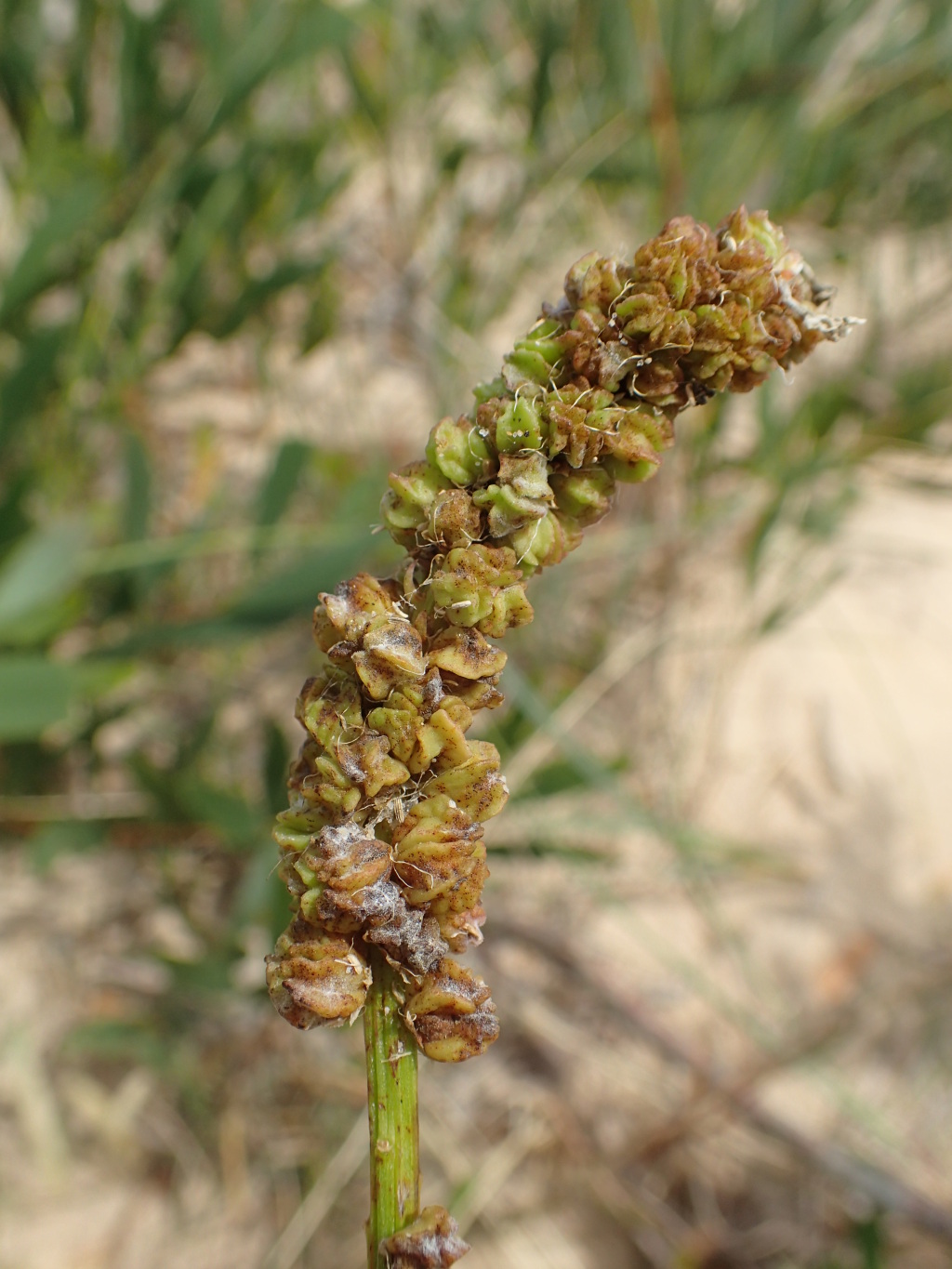Stackhousia spathulata
Sieber ex Spreng. Coast StackhousiaGlabrous, often subshrubby and rounded perennial to c. 20(–40) cm high; stems procumbent to ascending; leaves obovate to spathulate, 8–30 mm long, 4–12 mm wide, thick, obtuse, rounded or truncate (sometimes shortly mucronate) at the apex. Inflorescence a dense cylindric spike; flowers sweetly fragrant, solitary at nodes, each subtended by a bract and 2 bracteoles, all c. triangular, herbaceous, bracts c. 0.5–1 times as long as calyx, bracteoles half to two-thirds as long as bract. Hypanthium 1–1.5 mm long; sepals 1.5–2 mm long; corolla white or cream, tube 6–8 mm long, lobes 4–5 mm long obtuse; gynoecium 3-partite. Mericarps 4–6 mm long, longitudinally 3-winged, shallowly reticulate between the wings; basal cavity shallow. Flowers Jul.–Jan.
GleP, Brid, VVP, GipP, OtP, WaP, EGL, WPro, OtR. Also SA, Qld, NSW, Tas. Occasional on foredunes of ocean beaches, but patchily distributed and seldom common.
Barker, W.R. (1999). Stackhousiaceae. In: Walsh, N.G.; Entwisle, T.J., Flora of Victoria Vol. 4, Cornaceae to Asteraceae, pp. 49–54. Inkata Press, Melbourne.
 Spinning
Spinning


